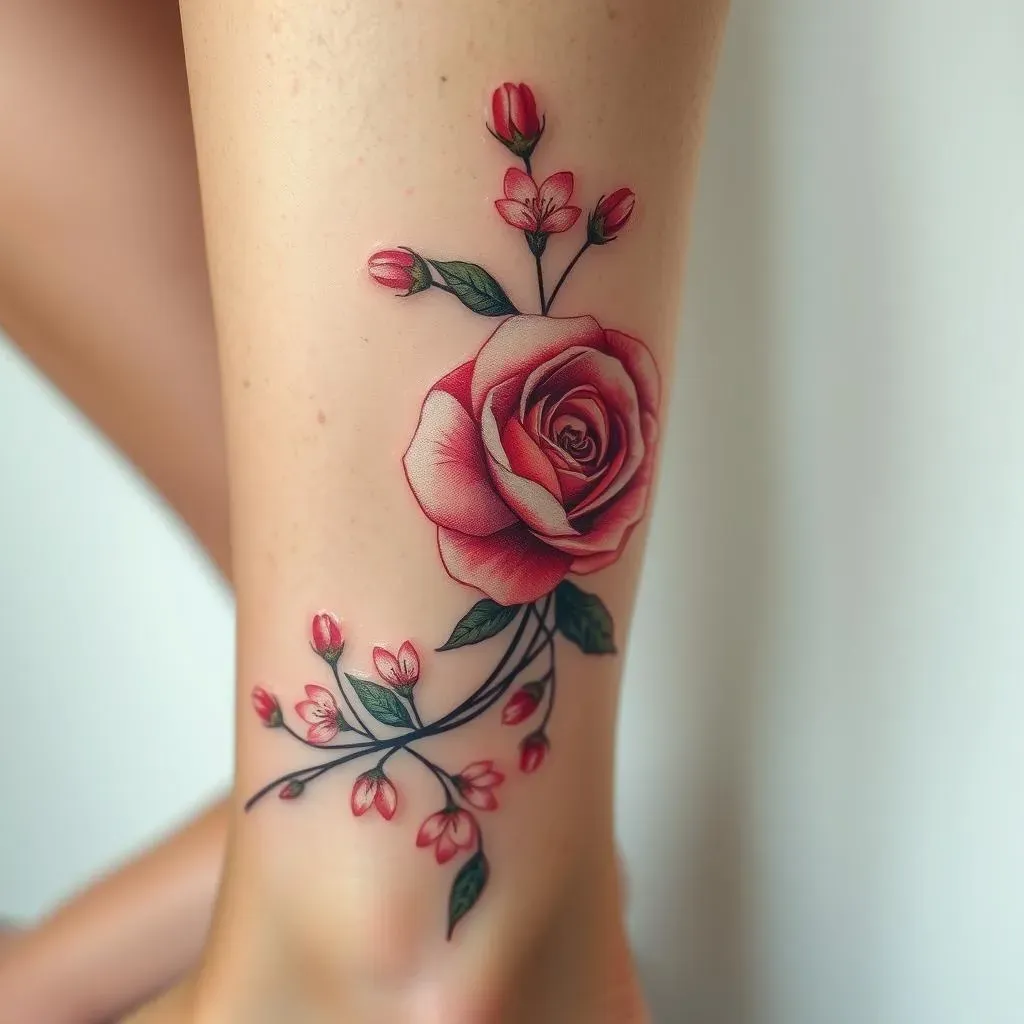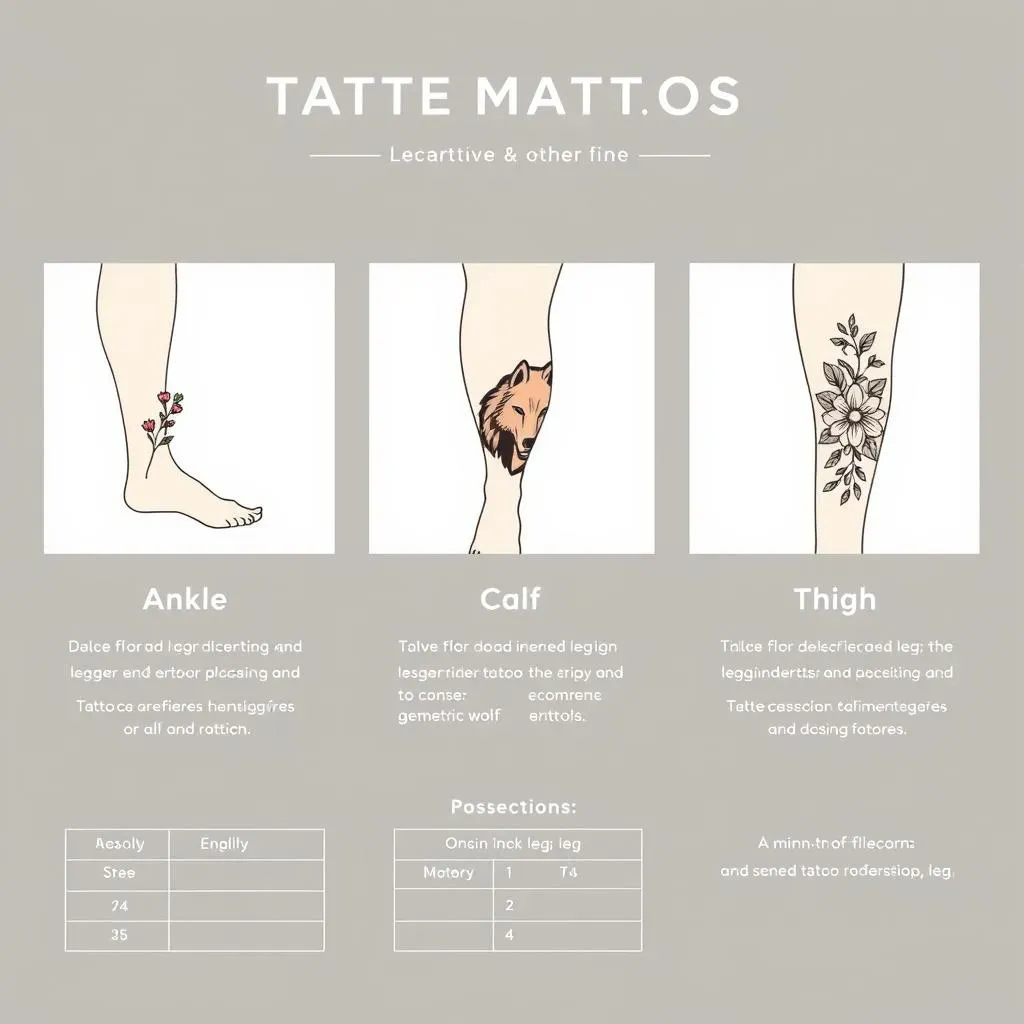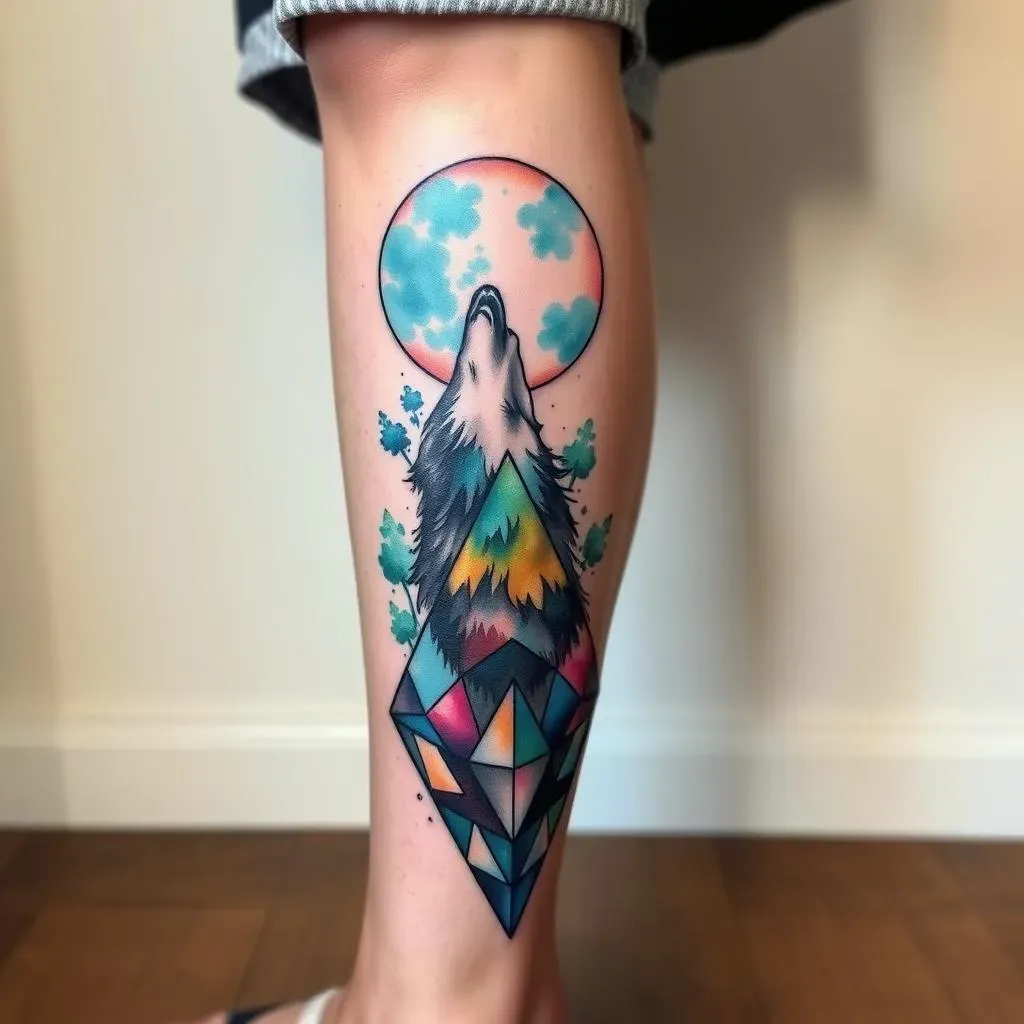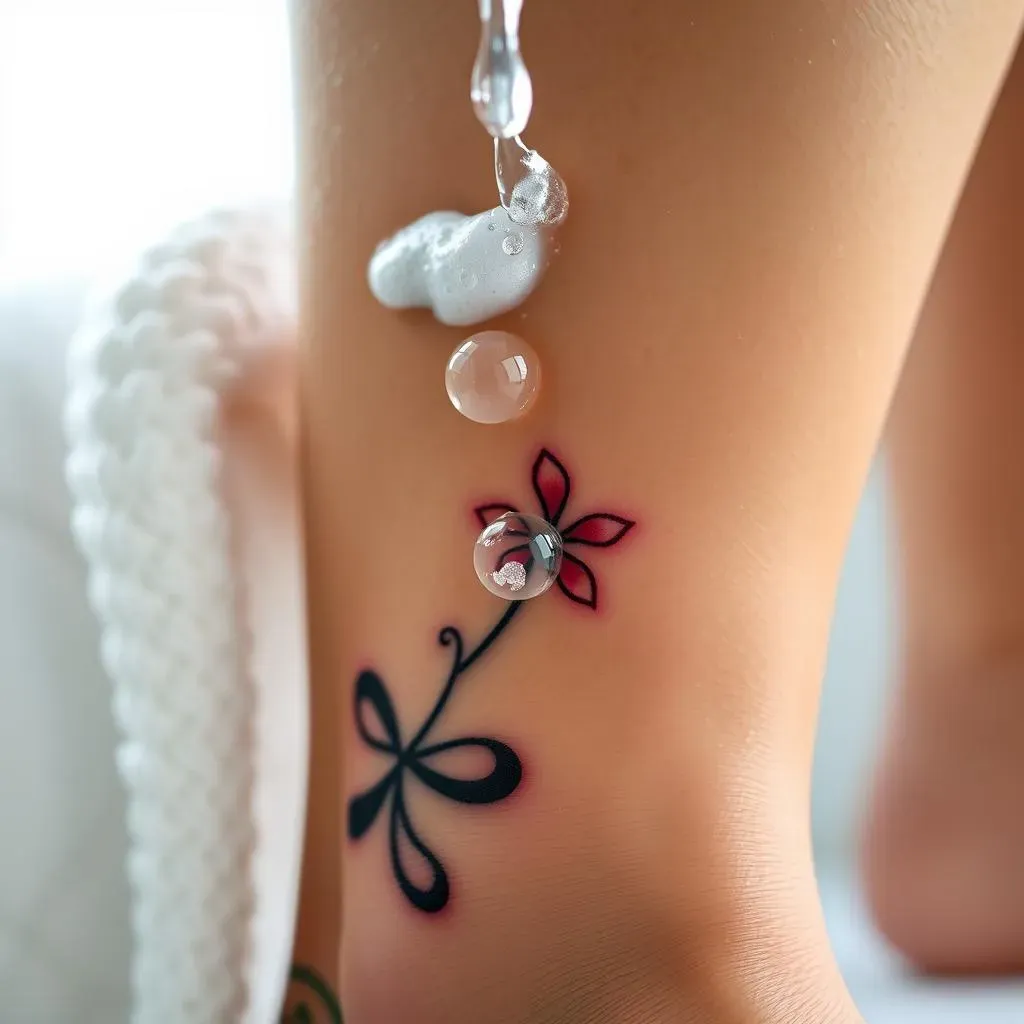Table of Contents
Looking for the perfect piece of ink to adorn your lower limbs? You're not alone! Tattoo ideas for women leg are incredibly popular, and for good reason. The leg offers a fantastic canvas for self-expression, whether you're dreaming of delicate floral designs, bold geometric patterns, or something entirely unique. This article is your ultimate guide to navigating the world of leg tattoos. We'll explore a diverse range of design options, from ankle accents to full leg sleeves, and delve into the art of placement to help you find the ideal spot for your chosen design. Thinking about a small, subtle tattoo? We've got you covered. Yearning for a statement piece that turns heads? We'll showcase some breathtaking examples. Beyond the aesthetics, we'll also discuss the practical side of getting a leg tattoo, including what to expect during the process and how to properly care for your new art. So, whether you're a seasoned tattoo enthusiast or a first-timer, get ready to be inspired and empowered to make your leg tattoo dreams a reality!
Stunning Tattoo Ideas for Women Leg: Exploring Design Options

Stunning Tattoo Ideas for Women Leg: Exploring Design Options
Floral Fantasies: Blossoms and Botanical Beauty
Floral tattoos on the leg are timeless and versatile. From delicate cherry blossoms winding around the ankle to bold roses climbing up the thigh, the possibilities are endless. Consider the symbolism of different flowers – a lotus for enlightenment, a sunflower for joy, or a peony for prosperity. The level of detail can also vary widely, from minimalist line drawings to photorealistic masterpieces.
Think about incorporating different colors to add depth and dimension to your floral piece. Watercolors can create a soft, ethereal effect, while bold, saturated hues can make a statement. A skilled tattoo artist can bring your floral vision to life, creating a unique and personalized design that reflects your individual style. I have seen some incredible floral pieces that incorporate geometric shapes or mandalas for a more modern twist.
Geometric Grace: Lines, Shapes, and Symmetry
For a more contemporary and edgy look, geometric tattoos are an excellent choice. These designs often feature clean lines, intricate patterns, and symmetrical shapes. Mandalas, sacred geometry, and abstract designs are all popular options. The beauty of geometric tattoos lies in their simplicity and precision.
Consider the placement of your geometric tattoo to enhance its impact. A geometric band around the ankle can create a subtle yet stylish accent, while a larger piece on the thigh can make a bold statement. Black ink is a classic choice for geometric tattoos, but you can also experiment with different colors and shading techniques to add depth and dimension. I personally love the look of geometric tattoos that incorporate dotwork shading for a unique and textured effect.
Design Style | Description | Placement Ideas |
|---|---|---|
Floral | Delicate, feminine, and symbolic | Ankle, calf, thigh |
Geometric | Modern, edgy, and precise | Ankle band, thigh, full leg |
Animals | Meaningful, personal, and diverse | Calf, thigh, shin |
Placement Perfection: Finding the Ideal Spot for Your Leg Tattoo

Placement Perfection: Finding the Ideal Spot for Your Leg Tattoo
Ankle Accents: Subtle Statements and Delicate Designs
The ankle is a popular spot for smaller, more discreet tattoos. Delicate designs like floral sprigs, geometric bands, or meaningful symbols work well here. Ankle tattoos can be easily concealed with socks or shoes, making them a great option for those who want a tattoo that's not always on display. Consider the shape and contour of your ankle when choosing a design – a circular mandala can complement the ankle bone, while a vertical design can elongate the leg. I think dainty script or a small animal silhouette can also be incredibly charming on the ankle.
However, be mindful that ankle tattoos can be slightly more painful due to the proximity of bone and tendons. Proper aftercare is crucial to ensure the tattoo heals well, as the ankle area is prone to rubbing against shoes and socks.
Calf Canvas: Showcasing Medium-Sized Masterpieces
The calf offers a larger canvas for more detailed and intricate designs. This area is ideal for medium-sized tattoos that you want to show off. Floral arrangements, animal portraits, and geometric patterns all look fantastic on the calf. The muscular shape of the calf can also enhance the visual impact of the tattoo, adding depth and dimension. I've seen some incredible calf tattoos that incorporate shading and perspective to create a 3D effect.
One thing to consider is the direction of the design – a vertical tattoo can elongate the leg, while a horizontal design can make it appear wider. Also, be aware that calf tattoos can be prone to fading due to sun exposure, so it's important to protect them with sunscreen.
Thigh Territory: Bold Statements and Extensive Art
The thigh provides the largest canvas for leg tattoos, making it perfect for bold statements and extensive artwork. Full thigh pieces, including floral sleeves, intricate mandalas, and elaborate scenes, are increasingly popular. The thigh is also a great option for those who want a more private tattoo that can be easily covered with clothing. Consider the shape of your thigh when choosing a design – a flowing, organic design can complement the natural curves of the body, while a geometric design can create a more structured look. I find that thigh tattoos offer ample space for creativity and personalization.
Keep in mind that thigh tattoos can be more time-consuming and expensive due to their size and complexity. Also, the inner thigh area can be more sensitive to pain, so be prepared for a potentially more intense tattooing experience.
Placement | Design Style | Considerations |
|---|---|---|
Ankle | Small, delicate, discreet | Pain level, healing, visibility |
Calf | Medium-sized, detailed, visible | Sun exposure, design direction |
Thigh | Large, bold, private (optional) | Pain level, time, cost |
Express Yourself: Unique Tattoo Ideas for Women Leg

Express Yourself: Unique Tattoo Ideas for Women Leg
Animal Allegiance: Creatures Great and Small
Animal tattoos are a fantastic way to showcase your personality and connection to the natural world. Whether it's a majestic lion representing strength and courage, a graceful butterfly symbolizing transformation, or a loyal dog embodying companionship, the options are endless. Consider the symbolism of different animals and choose one that resonates with you on a personal level. A detailed animal portrait on the calf or thigh can be a stunning tribute to your favorite creature. I have seen some incredible watercolor animal tattoos that look like living paintings on the skin.
Think about incorporating elements from the animal's natural habitat into the design to add depth and context. For example, a wolf howling at the moon, a hummingbird sipping nectar from a flower, or a sea turtle swimming through coral reefs. The possibilities are truly limitless when it comes to animal-inspired tattoos. Also, do not be afraid to get creative by adding your own personal twist to the design, such as incorporating geometric shapes or abstract patterns.
Symbolic Script: Words, Phrases, and Meaningful Messages
Script tattoos are a powerful way to express your beliefs, values, and personal motto. A meaningful quote, a loved one's name, or a simple word can carry profound significance when inked onto your skin. Consider the font and placement of your script tattoo to enhance its impact. A delicate cursive script around the ankle can be both elegant and understated, while a bold sans-serif font on the thigh can make a statement. I think that the key is to choose a font that reflects the tone and message of the words you're conveying.
Think about the language you want to use for your script tattoo. Latin, Sanskrit, and other ancient languages can add a touch of mystique and intrigue. However, be sure to double-check the spelling and grammar to avoid any embarrassing mistakes. Also, I recommend consulting with your tattoo artist to ensure the script is legible and will age well over time.
Design Style | Animal | Script |
|---|---|---|
Symbolism | Represents connection to nature and personality | Expresses beliefs, values, and personal motto |
Placement | Calf, thigh | Ankle, thigh |
Considerations | Incorporate habitat elements, personal twist | Font choice, language accuracy, legibility |
Abstract Art: Colors, Shapes, and Fluid Forms
If you're looking for a truly unique and unconventional tattoo, abstract art is the way to go. These designs often feature vibrant colors, fluid shapes, and non-representational forms. The beauty of abstract tattoos lies in their ambiguity and open interpretation. They allow you to express yourself in a way that's both visually stunning and deeply personal. I have seen some incredible abstract leg tattoos that look like living paintings, with colors blending and swirling together to create a mesmerizing effect.
Consider incorporating different textures and techniques to add depth and dimension to your abstract piece. Watercolor effects, dotwork shading, and geometric patterns can all be used to create a unique and visually interesting design. Also, do not be afraid to experiment with different color palettes to achieve the desired mood and tone. A skilled tattoo artist can guide you through the process and help you create an abstract masterpiece that reflects your individual style.
The Process & Aftercare: Ensuring Your Leg Tattoo Looks Amazing

The Process & Aftercare: Ensuring Your Leg Tattoo Looks Amazing
Finding the Right Artist: Research, Portfolio, and Consultation
Choosing the right tattoo artist is paramount to ensuring a positive experience and a beautiful, long-lasting tattoo. Start by researching artists in your area or those who specialize in the style you're looking for. Online portfolios, social media, and word-of-mouth referrals are all valuable resources. Pay close attention to the artist's previous work, focusing on their linework, shading, and overall attention to detail. A consultation is essential to discuss your design ideas, placement preferences, and any concerns you may have. This is also an opportunity to assess the artist's personality and communication style to ensure you feel comfortable and confident in their abilities. Trust me, finding an artist whose vibe matches yours makes the whole process way smoother.
During the consultation, be prepared to discuss your medical history, any allergies you may have, and any medications you're currently taking. This information is important for the artist to ensure your safety and well-being. Also, don't hesitate to ask questions about their sterilization procedures, ink quality, and aftercare instructions. A reputable artist will be transparent and forthcoming with this information. Remember, a well-informed client is a happy client!
The Tattooing Session: Preparation, Pain Management, and Patience
Once you've chosen your artist and finalized your design, it's time for the tattooing session. Proper preparation is key to minimizing discomfort and ensuring a smooth process. Get a good night's sleep, eat a healthy meal, and avoid alcohol or caffeine before your appointment. Wear loose, comfortable clothing that allows easy access to the area being tattooed. During the session, communicate openly with your artist about your pain level and any concerns you may have. They can adjust their technique or take breaks as needed to ensure your comfort. Remember, patience is crucial, especially for larger or more intricate designs. Trust the process and allow your artist to work their magic.
After the tattoo is complete, your artist will apply a bandage or protective covering to the area. This is to protect the tattoo from bacteria and friction. Follow their instructions carefully regarding how long to keep the bandage on and how to properly clean the tattoo once it's removed. A little discomfort is normal during the tattooing process, but if you experience excessive pain, swelling, or bleeding, contact your artist or a medical professional immediately.
Stage | Description | Tips |
|---|---|---|
Research | Find artists specializing in your desired style | Check portfolios, social media, referrals |
Consultation | Discuss design, placement, and medical history | Ask about sterilization, ink, and aftercare |
Session | Prepare body, communicate with artist | Get rest, eat well, wear comfy clothes |
Aftercare Essentials: Cleaning, Moisturizing, and Protecting
Proper aftercare is crucial for ensuring your leg tattoo heals properly and looks its best for years to come. Follow your artist's instructions carefully, as they may vary depending on the type of tattoo and your individual skin type. Generally, you'll need to gently clean the tattoo with mild soap and water several times a day, pat it dry with a clean towel, and apply a thin layer of fragrance-free moisturizer. Avoid using harsh chemicals, scented lotions, or petroleum-based products, as these can irritate the skin and interfere with the healing process. I personally recommend using a specialized tattoo aftercare balm that contains natural ingredients like shea butter and coconut oil.
Protect your tattoo from sun exposure by wearing loose clothing or applying a high-SPF sunscreen. Avoid swimming, soaking in bathtubs, or engaging in activities that could expose the tattoo to bacteria or friction. Resist the urge to pick or scratch at the tattoo, as this can lead to infection and scarring. The healing process typically takes 2-4 weeks, during which time you may experience some itching, flaking, and scabbing. This is normal, but if you notice any signs of infection, such as excessive redness, swelling, or pus, seek medical attention immediately. With proper care and attention, your leg tattoo will heal beautifully and become a cherished piece of art for years to come.
- Clean gently with mild soap and water
- Moisturize with fragrance-free lotion
- Protect from sun exposure with clothing or sunscreen
- Avoid swimming and friction
- Don't pick or scratch
Final Thoughts: Your Leg Tattoo Journey Awaits
Choosing a tattoo is a deeply personal experience, and hopefully, this guide has sparked your imagination and provided you with the knowledge to embark on your leg tattoo journey with confidence. Remember to carefully consider your design, placement, and the artist you choose. With proper planning and aftercare, your leg tattoo can become a beautiful and lasting expression of your unique self. So go ahead, take the plunge, and let your legs tell your story!